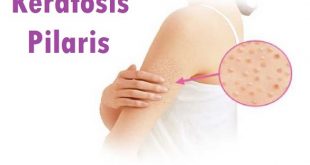Definition
Kernicterus is a rare but serious neurological disorder that occurs as a result of severe hyperbilirubinemia, which is a high level of bilirubin in the blood. When red blood cells break down, they produce a yellowish substance called bilirubin. The liver normally processes and excretes it. In the case of infants, kernicterus can occur as the liver may not fully develop, and the bilirubin may accumulate in the blood. This can lead to hyperbilirubinemia. When the bilirubin levels become too high, it can cross the blood-brain barrier and enter the brain. This can result in damage to the brain cells. This can lead to a range of neurological symptoms, including hearing loss, movement disorders, and cognitive impairment. In severe cases, it can even result in death.
Epidemiology
The condition occurs primarily in children, mostly African Americans and South Asians, and is slightly more common in males than females. The incidence of kernicterus is not exactly known in the United States. Asian, Hispanic, Native American, and Eskimo infants have a higher production of bilirubin than white infants. Black infants, on the other hand, have lower production levels. Preterm infants are at a higher risk of kernicterus than term infants. Male infants have a higher level of serum bilirubin than female infants. The prevailing risk of chronic kernicterus is about one in seven in infants with total serum bilirubin greater than 30 mg/dL. Kernicterus also occurs in infants with bilirubin levels less than 25 mg/dL, but the population risk of this occurrence is unknown.
Types
Kernicterus is divided into three types based on its duration and severity.
- Acute bilirubin encephalopathy comprises an acute state of increased bilirubin levels in the body. This can easily cross the blood-brain barrier and cause multiple neurological dysfunctions, including hypotonia or hypertonia, lethargy, fever, seizures, etc. Death can result in severe cases.
- Subtle bilirubin encephalopathy presents with neurological disorders without the typical findings of kernicterus. It may include hypotonia, ataxia, aphasia, problems with sensory and motor functions, etc.
- Chronic bilirubin encephalopathy develops as a consequence of long-term acute bilirubin encephalopathy. The clinical manifestation of this condition usually occurs after one year of age, including abnormal motor functions, disturbance in hearing, oculomotor impairment, and dental enamel hypoplasia. The digestive function may also be impaired.
Pathophysiology
The neonatal hyperbilirubinemia occurs due to increased production or limited excretion of indirect or unconjugated bilirubin. Newborns baby, especially preterm neonates, have higher rates of bilirubin production than adults, because an increased red cells turnover and a shorter life span. In newborn neonates, unconjugated bilirubin is not easily excreted, and there is limited bilirubin conjugation which lead to physiologic jaundice. Excessive physiologic jaundice occurs at values above 7 to 17 mg/dl [104 to 291 μmol/l]). Serum bilirubin concentrations greater than 17 m/dl in full-term infants are no longer considered physiologic and pathologic causes should be identified, of which the most common are Crigler-Najjar syndrome, Gilbert syndrome, hemolytic disorders, and a reduced ability to conjugate bilirubin in newborn babies.
What are the symptoms of kernicterus?
Kernicterus symptoms will greatly depend upon if it’s in an early or later stage of the disorder. Generally, symptoms begin two to five days after the baby is born. The most notable symptom is, of course, the yellowing of the baby’s skin, whites of the eyes and mucous membranes. Other symptoms may develop, however, as the condition progresses.
Symptoms associated with the early stage include:
- Poor feeding and sucking
- Excessive jaundice
- Hypotonia
- Fatigue and lethargy
As the condition progresses, symptoms may include:
- High-pitched shrieks and cry
- Seizures
- Bulging on the infant’s “soft spot” (fontanel)
As Kernicterus reaches the most severe stage, symptoms may include:
- Hearing loss (high-frequency)
- Vision loss
- An increase in seizures
- Muscle stiffness and problems with movement
Causes of Kernicterus
Very high levels of bilirubin in your blood (hyperbilirubinemia) cause kernicterus. This happens when your newborn’s liver can’t get rid of enough bilirubin.
Causes of hyperbilirubinemia may include:
- Polycythemia: Too many red blood cells in your body.
- Hemolysis: Your body destroys red blood cells. This is a natural part of a cell’s lifecycle. Sometimes, your body destroys cells too soon or more than usual.
- Injury during birth: Your baby may develop an injury during the birthing process like a collection of blood under their scalp (cephalohematoma), bleeding between their skin and skull (subgaleal hemorrhage) or bruising.
- An underlying condition that affects your child’s blood cells, like Rh hemolytic disease or a condition that affects your child’s liver, like Crigler-Najjar syndrome.
When your liver isn’t able to get rid of bilirubin through your poop, it collects in your blood before moving into your brain tissue. Bilirubin in your brain can cause severe complications.
Risk factors of Kernicterus
Your infant has a higher chance of developing kernicterus if the following conditions are present:
- Having jaundice as a newborn.
- Have a darker skin tone because the condition’s initial symptom, that is yellowing skin will be hard to spot.
- Were born earlier than 37 weeks of pregnancy.
- Are not eating well, which prevents them from pooping to eliminate bilirubin.
- Possess a biological family history of neonatal jaundice.
- Even healthy kids can get jaundice. Kernicterus may result from severe jaundice.
Complications
Kernicterus can cause serious, permanent, health complications related to brain damage.
A 2014 study followed 128 individuals treated for severe jaundice at birth for 30 years. The authors found that 45 percent experienced behavior impairments and problems related to the ability to think when children. These difficulties continued into adulthood.
Complications associated with kernicterus include:
- Hearing loss or difficulty processing sounds
- Vision problems
- Undeveloped teeth and jaw bones
- Movement disorders caused by brain damage
- Intellectual and developmental disabilities, including dyslexia
- Stained baby teeth
- Autistic spectrum disorders
- Epilepsy
- Inattention and hyperexcitability disorders, especially in early childhood
If left untreated, kernicterus can lead to coma and death.
Diagnosis and Tests
The diagnosis of kernicterus involves assessing the severity of jaundice and determining if elevated bilirubin levels have led to neurological damage. Healthcare professionals use various methods to diagnose kernicterus and monitor jaundice in newborns. Here are some common diagnostic approaches:
Bilirubin Level Testing
Blood tests are performed to measure the levels of bilirubin in the infant’s blood. Elevated unconjugated bilirubin levels, especially when exceeding established thresholds, can indicate a higher risk of kernicterus.
Physical Examination
Healthcare providers conduct a physical examination to assess the extent of jaundice in the newborn. They may examine the skin, eyes, and mucous membranes to evaluate the severity of yellow discoloration.
Neurological Assessment
A thorough neurological examination is crucial to identify any signs of neurological damage. This may include assessing muscle tone, reflexes, and responsiveness.
Bilirubin Encephalopathy Staging
In cases where kernicterus is suspected, healthcare professionals may use a staging system to classify the severity of bilirubin encephalopathy, the neurological condition associated with elevated bilirubin. The Kramer or Modified Kramer Scale is commonly used for this purpose.
Imaging Studies
In some cases, imaging studies such as magnetic resonance imaging (MRI) or computed tomography (CT) scans may be performed to assess the extent of brain damage associated with kernicterus.
Early diagnosis and intervention are crucial to prevent the progression of jaundice to kernicterus. If high bilirubin levels are detected, healthcare providers may initiate phototherapy or other treatments to lower bilirubin levels and prevent neurological damage. Regular monitoring and follow-up assessments are important to ensure the infant’s well-being.
Treatment for Kernicterus
The primary goal of treating kernicterus is to reduce elevated bilirubin levels and prevent further neurological damage in newborns. The specific treatment approach depends on the severity of jaundice and the presence of any complications. Here are some common treatments for kernicterus or elevated bilirubin levels:
- Phototherapy: This is the most common and initial treatment for hyperbilirubinemia. The infant is exposed to special blue lights that help convert bilirubin into a form that can be more easily excreted from the body. Phototherapy is often effective in reducing bilirubin levels.
- Exchange Transfusion: In severe cases, when phototherapy is not sufficient or the bilirubin levels are dangerously high, an exchange transfusion may be recommended. This involves removing a small amount of the infant’s blood and replacing it with donor blood. This helps rapidly reduce the levels of bilirubin in the bloodstream.
- Intravenous Immunoglobulin (IVIG): In some cases, IVIG may be used to treat hemolysis (destruction of red blood cells), which can contribute to elevated bilirubin levels.
- Monitoring and Supportive Care: Close monitoring of bilirubin levels and the infant’s overall condition is crucial. Supportive care, such as maintaining hydration and addressing any underlying medical issues, is an important part of the treatment plan.
- Management of Underlying Causes: Identifying and addressing the underlying causes of jaundice, such as infections or blood type incompatibilities between the mother and baby, is essential for effective treatment.
It’s important to note that early detection and intervention are key to preventing the progression of jaundice to kernicterus. Regular check-ups and monitoring of bilirubin levels in newborns are routine practices in healthcare settings to identify and address any concerns promptly.
Prevention steps for kernicterus
You may be able to help prevent kernicterus by being aware of the symptoms of jaundice and making sure your baby gets testing and treatment when needed.
- If your baby is still in the hospital and has signs of jaundice, your doctor or nurse may do a transcutaneous bilirubin test. A small device will be gently placed against your baby’s skin to check the bilirubin level. A blood test can also check your baby’s bilirubin level. A baby with a bilirubin level that requires treatment will have light therapy (phototherapy). This is usually given in the hospital. In very mild cases, you may treat your baby at home using lights the doctor gives you.
- Do not be alarmed if your baby has to have phototherapy. It does not mean that your baby is in danger of having brain damage. Doctors use this therapy to help prevent bilirubin from getting to a dangerous level.
- Feed your baby at least every 2 to 3 hours during the first week or two. This helps keep bilirubin moving out of the body through urine and stool.
- Set up a well-baby check-up before you leave the hospital. Jaundice is usually at its worst around day 5, so have the visit within the first 5 days after your child’s birth. The doctor will check your baby for jaundice that is of any concern.
- Call your doctor if you think that your baby’s skin on the tummy, arms, or legs is getting yellow or that yellowing on the face is getting worse. Also look for yellowing in the whites of your baby’s eyes. Get medical help right away if your baby is jaundiced and is hard to wake, acts very fussy, or is not feeding well.
 Diseases Treatments Dictionary This is complete solution to read all diseases treatments Which covers Prevention, Causes, Symptoms, Medical Terms, Drugs, Prescription, Natural Remedies with cures and Treatments. Most of the common diseases were listed in names, split with categories.
Diseases Treatments Dictionary This is complete solution to read all diseases treatments Which covers Prevention, Causes, Symptoms, Medical Terms, Drugs, Prescription, Natural Remedies with cures and Treatments. Most of the common diseases were listed in names, split with categories.








fantastic,it’s a very good article,